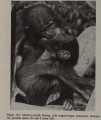One of our staff members is contributing considerably to a News Archiving service at Mu. Any well educated (Masters, PhD or above) users who wish to make comments on news sites, please contact Jim Burton directly rather than using this list, and we can work on maximising view count.
Research: Nonwestern Intergenerational Relationships
 | ||||||||||||
| Part of NewgonWiki's research project | ||||||||||||
|---|---|---|---|---|---|---|---|---|---|---|---|---|
|
| ||||||||||||
| ||||||||||||
|
| ||||||||||||
| Template: Research - This template |
Most societies which have not been influenced by the west have less, no or different sexual taboos. It is worth mentioning that absent modern western influence, anthropologists and historians have found far more societies where homosexuality is prohibited than societies in which pedosexuality suffers similar censure. Many encourage intergenerational sex for various reasons. Due to ongoing westernisation, much of what is listed here may already be consigned to history (see, for example, Nieto (2004), for an anthropological review).
GUS, a world atlas: Growing Up Sexually
The range and detail of accounts involved in this page will only serve as a brief demonstration of non-western diversity in intergenerational relationships. If readers are seeking a broader, more detailed and integrated study, they may find Diederik Janssen's Growing Up Sexually more appropriate, or Greek Love: Pederasty throughout the ages, re. homosexuality.
Brazil - Amazon, Indigenous (80s, onwards)
Daniel Everett, in his extensive study of the Piraha people:
- "Relations between men and women and boys and girls, whether married or not, are always cordial and often marked by light to heavy flirting. Sexually it is the same. So long as children are not forced or hurt, there is no prohibition against their participating in sex with adults. I remember once talking to Xisaoxoi, a Pirahã man in his late thirties, when a nine- or ten-year-old girl was standing beside him. As we talked, she rubbed her hands sensually over his chest and back and rubbed his crotch area through his thin, worn nylon shorts. Both were enjoying themselves. “What’s she doing?” I asked superfluously. “Oh, she’s just playing. We play together. When she’s big she will be my wife” was his nonchalant reply—and, indeed, after the girl went through puberty, they were married."[1]
Melanesia
Melanesian societies have normalised the consumption of semen by prepubescent boys. This is thought to be in aid of their future status as warriors. Semen is received via oral or anal sex with an adolescent boy or man. Relationships are said to be free-flowing and affectionate among the Sambia of New-Guinea.
- Hyena, Hank (1999). "Semen Warriors Of New Guinea," Gettingit.com, September 16.
- "Although many boys tremble initially ("I felt afraid... the penises were enormous," recalls Kalutuo, a Sambian from the Eastern Highlands) they all adjust quickly, because they believe semen is an elixir for manhood."
- Knauft, Bruce M. (1987). "Homosexuality in Melanesia," Journal of Psychoanalytic Anthropology, 10, 155-91.
- Melanesian boys "coquettishly initiated" homosexuality with grown men. Relationships were "grounded in personal affection rather than obligation".
- Anitei, Stefan (2007). "How to Drink Sperm to Become a Strong Man," Softpedia, October 6.
- "This power is transmitted between the members of the tribe by means of sex. That's why young boys, even at the age of 12, get it from the sperm of the older males. The boy gets "power" orally by a young man assigned to be his partner. Few years later, the teenager is formally involved in relationships with many male sex partners, after which he turns into an "inseminator" from an "inseminee.""
- Janssen, D.F. (2002). "Papua New Guinea," Growing Up Sexually, Volume I: World Reference Atlas.
- "...the “Sambia” value male-virgin contacts (1984:p177), while “sexual partners are perceived as having more “heat” and being more exciting the younger they are. A second factor is reciprocity: the more asymmetrical the sexual partners (youth/boy), the more erotic play seems to culturally define their contact” [sic]. Against the background of an utterly phallocentric ideology on the androtrophic properties of semen, “Sambia” prepubertal boys (7-12, on average 8.5) fellate post-pubertal adolescents to ejaculation in order to grow and turn seminarchic themselves, so that they may reverse roles. The boys do not have orgasms, and might have “vicarious erotic pleasure as indicated by erections” only “near puberty” (Herdt and Stoller, 1990:p70-1)."
Polynesia
- Martinson, Floyd M. (1973). Infant and Child Sexuality: A Sociological Perspective. The Book Mark.
- "Sex play was common practice from the earliest ages among the Marquesa and not only tolerated but encouraged. (Kardiner, 1939, p. 205-206). They recognized the erotic impulse in childhood and accorded it the right of free exercise. They eroticized the child by masturbating it to keep it quiet. In the case of the girls, labia were manipulated as a placebo, but also to encourage the growth of large labia, which to the Marquesans was a mark of beauty. Such activity was, no doubt, also erotically stimulating. There was social recognition of all sexual activity in childhood, and there were no restrictions against encouragement to exercise it freely; it was allocated the same place in the child's world that it occupied in the adult's."
Indonesia
- Martinson, Floyd M. (1973). Infant and Child Sexuality: A Sociological Perspective. The Book Mark.
- "Among the Balinese, play and teasing with the genitals is common. A mother will pat her baby girl on the vulva and exclaim, "Pretty! Pretty!" (Bateson and Mead, 1942, p. 26, 32, 131). A boy's penis will be stroked and rubbed. After he has urinated, he will be dried by a flick of his penis. As he grows older, his penis will be pulled and stretched and ruffled, and he will often attempt to keep his balance when learning to walk by holding on to it. Babies are comforted and quieted by manipulating their genital organs. In fact, in Bali, a baby, especially a baby's genital, is a toy with which to play. There is much delight taken in stimulating and playing with the baby to watch him respond."
Australia
Davenport, William H. (1992). 'Adult-Child Sexual Relations in Cross-Cultural Perspective', in W. O'Donohue & J. H. Geer (Eds.), The sexual abuse of children: Theory and research (Vol. 1, Hillsdale, NJ: Erlbaum, 73-80), pp. 76-77.
- The best ethnographic description of this type of [gerontocratic] marriage is by Jane Goodale (1971) in her account of the Tiwi who live on Melville Island, North Australia. Betrothals of first marriages of most females are made even before those females are concieved. In fact, such a marriage contract is made when the as-yet-to-be-concieved girl's mother commences menstruation. [...] Once the marriage contract is made, the husband-to-be, who is an adult, works with his future mother and father-in-law as a member of that family, with the expectation that when a daughter is born to them, she will be given to him as a wife. There is no fixed chronological age at which the young girl is given to her designated husband, but it occurs after she is able to take on some household and other economic responsibilities, but well before her first menstruation. For the Tiwi she is still a child, albeit and older child. When her father decides that she is mature enough, the young girl is merely taken to her husband and instructed to reside and sleep with him. This is not an abrupt change [...] for the husband has been a part of the same family camp for some time, and the young wife is still surrounded by those with whom she has always lived. Goodale describes the process:
- Soon after the alinga [young girl] moves to her husband's fire he begins her sexual instruction. From all accounts this appears to be a very gradual process. He begins by deflowering her with his finger, and perhaps only after a year does he have actual intercourse with her. Sexual intercourse is considered by the Tiwi to be the direct and only cause of breast formation, growth of pubic and auxillary hair, menarche, and subsequent menstrual periods. (1971, p. 45) [blockquote]
- [...] versions of this marriage were once found among many Australian Aborigine groups (Berndt & Berndt, 1951; Gale, 1970; Kaberry, 1939; Rose, 1960). From our ethnocentric [i.e. Western] perspective, one of the most notable aspects [...] is the abscence of trauma".
The Balkans
- Zimmerman, Ann (1994). "'Tell Mama Why You Cry' (Part I)," (archive), Dallas Observer, November 17.
- An Albanian immigrant to the US is arrested for retaining his culture: "This harsh--and irreversible--punishment came at the end of a strange case that began in 1989 when several witnesses reported seeing Krasniqi fondle his daughter during a karate tournament in a Plano high school gymnasium in which his son was competing. Several years after the family court ruling, Krasniqi finally had his day in criminal court. Collin County Judge Nathan White acquitted him of the charge of indecency with a child primarily on the strength of testimony from Massachusetts anthropologist Barbara Halpern--one of the country's foremost authorities on the peasant culture of the Balkans. Halpern explained that Sam Krasniqi's actions were done not with sexual intent, but rather with playful affection--in keeping with his culture, which cherishes children and showers them with physical affection. [...]
- Shortly after the tournament began, Taylor's attention was drawn to the spectator in front of her. She watched as a 50-year-old man with thinning gray hair repeatedly rubbed the underpants-clad buttocks and bare legs of a little girl who was laid out across his lap. He also slipped his hand under the girl's panties and caressed and squeezed her buttocks. "He lifted her to face him and rubbed her front chest under her little dress. He then put his hand inside her panties from the leg opening and squeezed her vagina," Taylor wrote in a statement she gave police. [...]
- Wunderlich, who did not retrun calls to the Observer, had to explain to Kathy what molestation meant. "If you mean something sexual like with me and my husband, you are wrong," Kathy responded. "It is not a sexual thing and there is no harm to my children," Kathy told Wunderlich. [...]
- "According to Wunderlich's case notes, he admitted touching Lima and Tim, that it was acceptable in his country and it was just a big misunderstanding. "He denied it was sexual at all and said that I could kill him if he was lying and if it was sexually gratifying to him." Krasniqi has since insisted that Wunderlich misconstrued what he was telling her. At the karate tournament, Krasniqi insists he was just playing a game with his daughter--touching the parts of her body and asking her to say their names. "I tell Wunderlich, How can you love your children and not touch them?" Krasniqi explains, sitting in his home, surrounded by pictures of his children when they were younger.
- Nowhere in Wunderlich's case notes does it indicate that anyone in her department tried to research the Krasniqis' culture. If they had they might have learned what Barbara Halpern, the anthropologist from Massachusetts, testified to in Krasniqi's criminal trial. The Krasniqis come from "very physically demonstrative culture. Children are universally adored. Until they attain school age and venture beyond the household gates, they are the constant subjects of hugs, caresses and overt displays of affection.""
Traditional Hawaii
- Janssen, D.F. (2002). "Hawaii," Growing Up Sexually, Volume I: World Reference Atlas.
- "Karsch-Haack, (1901) stated that according to Richard Neuhauss, Hawai’ian “girls of 12 to 14 years are generally virgins no more and acts of impurity of father with daughter are no rarity[6] [...] For infant females in Hawai’i, “milk was squirted into her vagina, and the labia were pressed together (Diamond, 1990). The mons [veneris] was rubbed with kukui (candlenut) oil and pressed with the palm of the hand to flatten it and make it less prominent. The molding continued until the labia did not separate. This chore usually was done by the mother or by an “aunt” [...]”. The buttocks of infants, males more than females, were molded so that they became “rounded and not flat”, also clearly evolving from an aesthetic motive. A “blower” is designated for each male infant, ostensibly to prepare him for subincision of the foreskin: “the penis was blown into daily starting from birth. The blowing was said to loosen and balloon the foreskin [and] continued daily [...] until the young male was 6 or 7”, when penile subincision takes place. Diamond reports: “Individuals of both sexes were expected to initiate and participate in coitus at puberty, although sexual activity, play, instruction, and so forth occurred much earlier. For instance, as part of exploratory play, the young investigated each other’s genitals, and young males and females might masturbate each other heterosexually or homosexually. This activity occurred without adult disapproval, and it was considered to be an introduction to adulthood. Casual intercourse before adolescence was not an uncommon experience for males (Handy and Pukui, 1958) and females (Pukui, Haertig and Lee, 1972)"
Excerpt Graphic Library
The EGL on Broader Perspectives has some relevant information. Just right click/save and reproduce by uploading in short-form media to bypass character limits.
-
Janssen on Traditional Hawaii
-
Janssen (notes and sources) on Hippie Communes
-
Berger on Hippie Communes
-
More from Berger on communes
-
Don't Sleep, There Are Snakes: Life and Language in the Amazonian Jungle, by Daniel Everett.
-
Jose Nieto (2004): Children and adolescents as sexual beings: cross-cultural perspectives (chilling effect on Anthropology)
-
Some interesting historical perspectives: US and UK
-
Mark Smith, Ros Burnett on a controversial British Special Girls School
-
Wikipedia on Greek Pederasty Institution
-
Sex Atlas on cathartic Adult-Child sex play
-
Data on first marriage in prewestern societies (from the Binford Dataset)
-
Reproductive Value Curve
-
Ramey's SIECUS Report - Incest and intrinsic harm
-
Inciardi on child prostitutes
-
Mirkin on CP Industry
-
Levine on CP Industry
-
Richard Green: Interactions seen as beneficial
-
Religious Laws/Norms - Judaeo Christian
-
Rind continued
-
Rind on historical pederasty (cont'd)
-
Rind on historical pederasty (cont'd)
-
Rind on historical pederasty (cont'd)
-
Rind on historical pederasty (cont'd)
-
Rind on historical pederasty (cont'd)
-
Rind on historical pederasty (cont'd)
-
Rind combined in 1 image
-
Various excerpts on the Marquesas Islands
-
More from Suggs on the Marquesas Islands
-
Ford and Beach on cross-species/cultural data
-
Rind's summary on pederasty in animals[2]
-
One example from Bagemihl: Dolphins
-
Macaque age-gap sex play
-
Examples from Pedophilia: Biosocial Dimensions (Jay R. Feierman, ed.). New York: Springer-Verlag Publishers
-
Further from the above
-
Monkeys - direct screencap
-
Bonobo apes

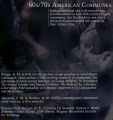

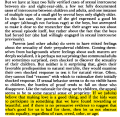

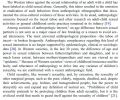




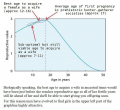




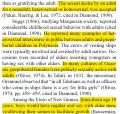

![Rind on historical pederasty throughout the world[2]](/wiki/images/thumb/Historical-Cultural-PederastyRind.jpg/120px-Historical-Cultural-PederastyRind.jpg)












